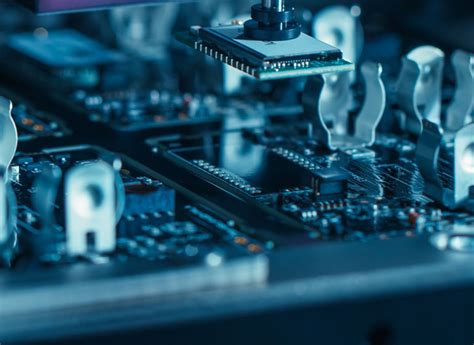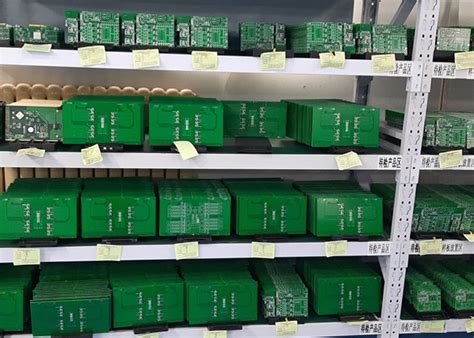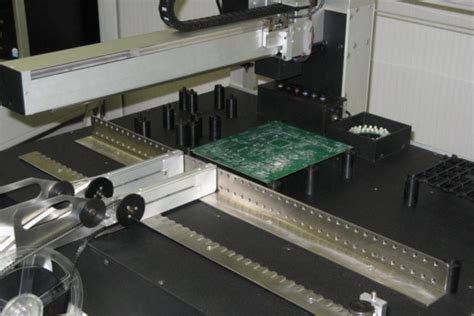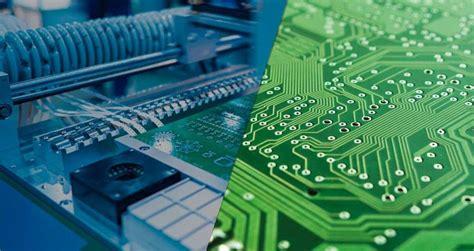Simplifying Processes with Turn Key Assembly Techniques
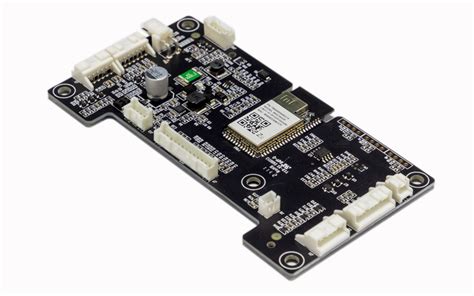
Key Takeaways
The integration of turn key assembly techniques offers numerous advantages for modern production environments. By adopting these methods, businesses can significantly streamline their operational processes, leading to faster production cycles and reduced downtime. One notable area of application is in pcb assembly, where pcba (printed circuit board assembly) not only benefits from reduced material waste but also minimizes the complexities often associated with the assembly line. Additionally, companies that implement turn key solutions find that they experience a reduction in overhead costs due to the efficiency gained from having a complete and ready-to-operate setup.
"Embracing a turn key assembly approach can transform how businesses operate, creating pathways for innovation while promoting cost-effectiveness."
Moreover, as many industries are demanding more tailored and rapid production tactics, the versatility of these techniques becomes ever more critical. With the right turn key assembly systems in place, companies can respond fluidly to market demands, maintaining a competitive edge while also enhancing overall quality assurance practices. In doing so, they are not only improving their own operations but also contributing to the development of best practices across various sectors.
Through understanding and leveraging these efficient processes, businesses position themselves for sustainable growth and adaptability in an evolving landscape.
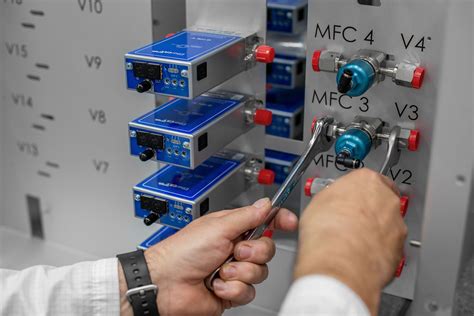
Understanding Turn Key Assembly: An Overview
Turn key assembly refers to a comprehensive service model in which a provider manages the entire production process, allowing businesses to focus on their core operations. This approach is especially significant in the realm of pcb assembly or pcba, where precision and efficiency are paramount. By employing turn key techniques, manufacturers can streamline their workflows, ensuring that each component is integrated seamlessly into the final product.
In the turn key assembly process, all necessary steps—from design to delivery—are coordinated by a single entity, thus minimizing the potential for miscommunication and delays often associated with multi-vendor scenarios. This not only fosters enhanced collaboration but also leads to quicker turnaround times, as all stakeholders operate under a unified strategy.
To illustrate how effective this approach can be, consider a scenario where an electronics manufacturer utilizes turn key assembly for its pcb assembly needs. Instead of sourcing different components and services from various suppliers, which could lead to increased costs and complexities, they engage a turn key provider who can deliver everything needed—from circuit board design to final assembly—in one cohesive solution.
Here’s how the components fit into the larger picture:
| Component | Description |
|---|---|
| Design | Initial schematic creation and layout design |
| Component Procurement | Sourcing of materials essential for production |
| Assembly | Combining components into a functional unit |
| Testing | Quality assurance checks prior to delivery |
| Delivery | Logistics and distribution of the final product |
By understanding the benefits and mechanisms of turn key assembly, businesses can make informed decisions that will ultimately enhance their production processes while allowing them to remain competitive in today’s fast-paced market landscape.

Benefits of Turn Key Assembly Techniques in Modern Production
The implementation of turn key assembly techniques has proven to be revolutionary in modern production environments, particularly in the realm of pcb assembly and its related processes, often referred to as pcba. By adopting these comprehensive solutions, manufacturers can enjoy streamlined operations that significantly reduce the time and resources needed for production. One of the primary benefits is cost reduction; by facilitating a more integrated approach, companies are able to minimize waste and optimize the use of materials and labor. In addition, these techniques foster enhanced efficiency, allowing for quicker turnaround times and the ability to meet increasing market demands with agility. Furthermore, organizations employing such methodologies can achieve better quality control, ensuring that products conform to stringent standards throughout every phase of assembly. Ultimately, leveraging turn key assembly not only transforms production capabilities but also positions companies competitively within their respective industries by enhancing overall productivity and lowering overhead costs associated with traditional manufacturing methods.
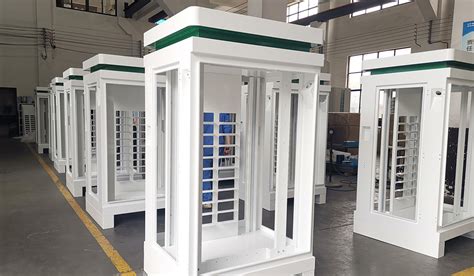
Reducing Costs with Efficient Turn Key Solutions
In the realm of manufacturing, turn key assembly solutions have emerged as a transformative approach to streamline operations and drive down expenses. By employing pcb assembly techniques, companies can significantly enhance productivity while simultaneously minimizing material wastage. The integration of efficient pcba processes enables businesses to maintain high-quality standards without incurring excessive costs. Additionally, these methods facilitate faster project execution, allowing firms to meet tight deadlines and respond swiftly to market demands. The automation involved in turn key solutions not only reduces labor costs but also ensures consistent output quality, leading to long-term savings. Moreover, with comprehensive support from suppliers and a focus on standardized components, organizations can avoid the pitfalls of custom production methods that often inflate expenses. Ultimately, the adoption of turn key assembly techniques empowers companies to focus their resources on innovation and growth while maintaining cost-effective operations that are essential for competitive market presence.
Enhancing Operational Efficiency through Turn Key Assembly
Turn key assembly techniques have emerged as a pivotal approach in modern industrial settings, particularly in the realm of pcb assembly and pcba. These methods offer a comprehensive solution that encompasses everything from design to final assembly, promoting a seamless integration of processes. By adopting turn key assembly methods, organizations can significantly enhance operational efficiency, as tasks that traditionally required multiple steps and disparate teams are consolidated into a single, cohesive workflow. This streamlined process not only minimizes the time spent on production but also reduces the likelihood of errors associated with handoffs between different stages of assembly. Furthermore, given the complexities involved in pcb assembly, utilizing turn key solutions ensures that components are precisely aligned with specifications, leading to improved product quality and consistency. As industries continue to seek competitive advantages, embracing turn key assembly techniques will undoubtedly play a crucial role in transforming operations and making significant strides toward enhanced efficiency and cost-effectiveness.
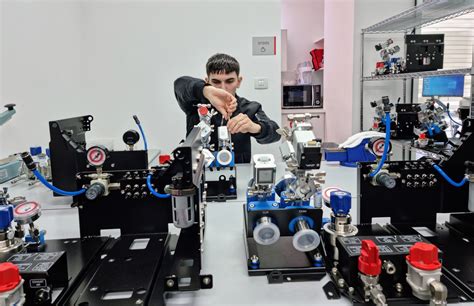
Industry Applications of Turn Key Assembly Methods
Turn key assembly methods have gained notable traction across various sectors, particularly in electronics manufacturing. One key area benefiting significantly from these techniques is pcb assembly. By utilizing modular designs and ready-to-use components, manufacturers can achieve a streamlined process that dramatically reduces lead times. The integration of pcba (printed circuit board assembly) has also allowed for swift transitions from design to production, minimizing the time products spend in development phases. Industries such as telecommunications and automotive are reaping the rewards of turn key assembly, seeing improvements in not just efficiency but also product reliability. As these methods simplify complex processes, companies are able to focus more on innovation and quality rather than operational bottlenecks. Moreover, the adaptability of turn key solutions enables businesses to tailor their operations to specific market demands, ensuring that they remain competitive in a rapidly evolving landscape.

Case Studies: Successful Implementation of Turn Key Assembly
In recent years, several industries have successfully embraced turn key assembly techniques, demonstrating their effectiveness in real-world applications. One notable case involves a leading electronics manufacturer that streamlined its PCB assembly process, integrating pcba methods to cut down on assembly time and labor costs significantly. By adopting a turn key solution, they were able to outsource specific components and streamline operations from design to production. This transition not only reduced lead times but also enhanced product quality through standardized methods.
Another case comes from the automotive sector, where a manufacturer implemented turn key assembly to optimize their supply chain. By collaborating closely with suppliers who could provide pre-assembled components, they saw a remarkable decrease in production errors and an increase in operational agility. The integration of pcba techniques allowed them to focus on core competencies while benefiting from the specialized expertise of their partners.
These examples illustrate that the adoption of turn key assembly methodologies can lead to measurable improvements in both cost efficiency and production capabilities, making it an attractive option for businesses aiming to enhance their operational framework. As more companies share their success stories, the trend towards turn key assembly solutions is poised to grow, setting new benchmarks for productivity across multiple sectors.
Overcoming Challenges with Turn Key Techniques
Implementing turn key assembly techniques can present several challenges, yet overcoming these obstacles is essential for maximizing their benefits. One significant challenge lies in the initial investment required for pcb assembly systems; companies may hesitate to allocate resources without guaranteed returns. To tackle this, it’s crucial to conduct a thorough analysis of potential efficiency gains and cost savings associated with pcba technologies. Additionally, integrating new turn key solutions often requires extensive training for personnel who must adapt to the updated processes and machinery. Companies can address this through comprehensive training programs that empower employees to operate and maintain turn key assembly systems effectively. Another challenge is ensuring that suppliers align with the quality standards necessary for successful implementation; establishing strong partnerships can mitigate this risk, fostering a collaborative environment focused on shared goals. By proactively identifying these hurdles and developing strategic plans to address them, organizations can enhance their operational efficiency and unlock the transformative potential of turn key assembly methodologies in their production processes.
Future Trends in Turn Key Assembly and Production Processes
As industries evolve, the future of turn key assembly techniques will likely integrate advanced technologies and methodologies, further enhancing their efficiency and effectiveness. The rise of automation and artificial intelligence is poised to revolutionize pcb assembly processes, allowing for real-time monitoring and adaptive production systems that can respond promptly to changes in demand. Furthermore, the shift towards sustainability is influencing production processes; manufacturers are increasingly adopting turn key solutions that prioritize resource efficiency and waste reduction. In particular, the integration of smart manufacturing practices with pcba will enable organizations to reduce operational costs significantly while increasing output quality. Collaborative robots (cobots) are expected to play a critical role in this landscape, working alongside human operators to streamline assembly lines. The future will also see an increased use of data analytics in turn key assembly, providing insights that drive continuous improvement and innovation. Overall, by embracing these emerging trends, companies can expect not only to stay competitive but also to lead in their respective markets through advanced turn key assembly techniques.
Conclusion
In conclusion, turn key assembly techniques have proven to be a transformative approach in modern production environments. By integrating elements such as pcb assembly and pcba methodologies, organizations can effectively streamline their operations while reducing overhead costs. The holistic nature of turn key solutions allows for a seamless transition from design to production, fostering an environment where efficiency becomes the norm rather than the exception. This comprehensive strategy not only enhances operational workflows but also promotes a higher standard of quality in the final products. As industries continue to evolve and embrace innovative techniques, the significance of adopting turn key assembly methods cannot be overstated. Those embracing these practices are better positioned to respond to market demands while ensuring sustainable growth and success across various sectors. The future looks promising as organizations that prioritize these approaches will undoubtedly find themselves ahead in a competitive landscape, ready to meet the challenges of tomorrow head-on.
FAQs
What is turn key assembly?
Turn key assembly refers to a comprehensive manufacturing solution where a product is designed, built, and delivered in a ready-to-use state. In this method, all components are handled by one supplier, ensuring that the end product is fully functional upon delivery.
How do turn key assembly techniques benefit PCB assembly?
Turn key assembly techniques greatly benefit PCB assembly (PCBA) by integrating processes that simplify the manufacturing workflow. This leads to enhanced quality control and quicker turnaround times as each component is sourced and assembled with precision.
What industries utilize turn key assembly methods?
Many industries utilize turn key assembly methods, including electronics, automotive, and aerospace. These methods allow for streamlined operations, reducing delays that could arise from coordinating multiple suppliers.
Can turn key solutions help with cost reduction?
Yes, implementing turn key solutions in production can significantly reduce costs by minimizing the number of suppliers and associated coordination overhead. This leads to volume discounts and less wasted resources during the manufacturing process.
How does turn key assembly enhance operational efficiency?
By deploying turn key assembly, organizations can achieve higher operational efficiency through standardized processes and reduced complexity. This not only shortens production timelines but also optimizes resource allocation across projects.
Discover More About PCB Assembly
For more insights on PCB assembly, please click here.


